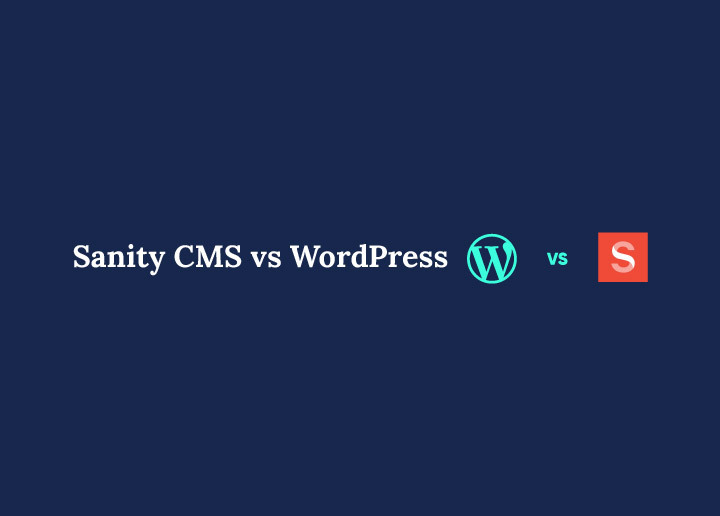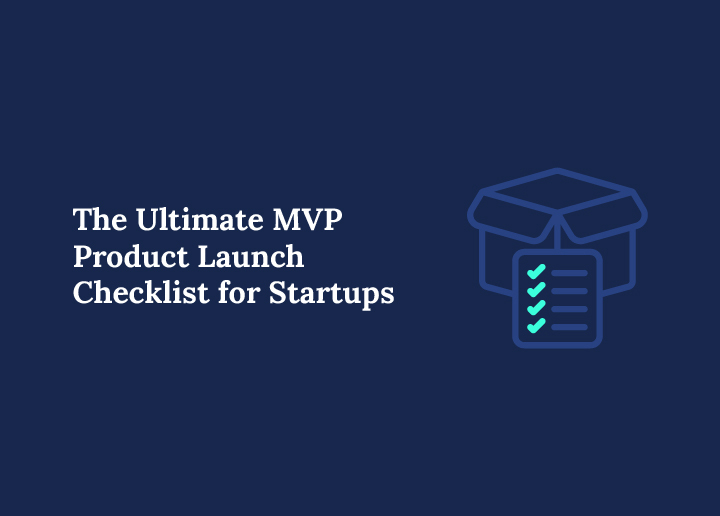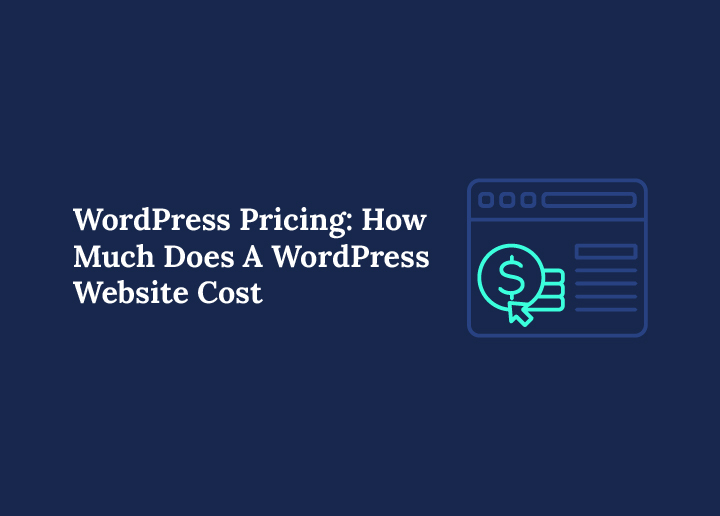Choosing the right Content Management System (CMS) is a critical decision for anyone looking to establish or maintain a strong online presence. Whether you’re setting up a personal blog, a corporate website, or a sophisticated e-commerce platform, the CMS you select can significantly impact the success of your project. That’s where the debate comes in: Sanity CMS vs WordPress?
While WordPress has long been the go-to choice for many, thanks to its ease of use and extensive plugin ecosystem, newer platforms like Sanity CMS are starting to make waves, offering modern, flexible solutions for today’s digital challenges.
In this blog, we’ll dive deep into the differences between Sanity CMS and WordPress, comparing their strengths, weaknesses, and unique features. Let’s dive in!
Quick Overview: Sanity CMS vs WordPress

Sanity CMS is a modern, headless content management system designed for flexibility and scalability. It allows developers to manage content independently from its presentation, making it ideal for projects that require a high degree of customization.
With features like real-time collaboration and powerful APIs, Sanity is well-suited for building complex, content-rich applications across multiple platforms.

On the other hand, WordPress is the world’s most popular open-source content management system, known for its versatility and ease of use. It offers a vast ecosystem of themes and plugins that enable users to create and customize websites with minimal coding knowledge.
Whether you’re building a simple blog or a complex e-commerce site, WordPress’s extensive community support and user-friendly interface make it a go-to choice for millions of websites worldwide.
Detailed Comparison: Sanity CMS vs WordPress
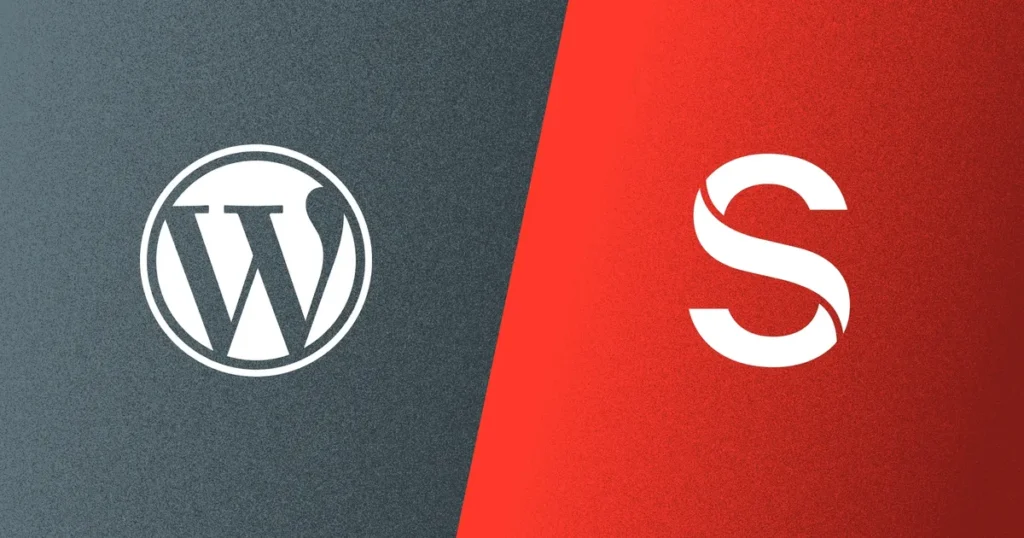
When choosing between Sanity CMS and WordPress, it’s important to consider various factors that could impact your workflow, customization options, team collaboration, and the overall functionality of your website. Below, we provide a concise comparison of these two platforms in key areas.
Sanity CMS vs WordPress: Ease of Use and Setup Process
Sanity CMS is built with developers in mind, offering a flexible setup process that requires technical expertise but results in a powerful, customizable environment..
On the other hand, WordPress is known for its straightforward installation and user-friendly interface, making it accessible to beginners and non-technical users alike.
Read: How to Setup & Launch Your WordPress Site
Sanity CMS vs WordPress: Customization and Flexibility
Sanity CMS excels in offering deep customization through its headless architecture, allowing developers to create highly tailored content/ models and front-end experiences.
WordPress, while also customizable, provides flexibility primarily through its extensive range of themes and plugins, which allow users to build unique websites without needing to write code.
Read: Reasons to Hire a Professional Agency for WordPress Design
Sanity CMS vs WordPress: Team Management
When it comes to managing a team, Sanity CMS stands out with its real-time collaboration features, enabling multiple users to work on the same content simultaneously, enhancing productivity and reducing the risk of conflicts.
WordPress, although it supports multiple user roles with defined permissions, does not offer real-time collaboration, making it more suitable for teams where tasks are handled sequentially.
Keep Reading: Your Go-To Guide for Hiring Dedicated WordPress Developers
Sanity CMS vs WordPress: Plugins and Extensions
Sanity CMS provides a growing selection of plugins and integrations, particularly focused on content management and enhancing development workflows, which cater well to developers’ needs.
In contrast, WordPress offers an unparalleled number of plugins, over 59,000, covering a wide range of functionalities, from SEO optimization to e-commerce, making it one of the most extendable and versatile CMS platforms available.
Read Another Review: WordPress vs Contentful: Which is the Better CMS
Sanity CMS vs WordPress: Pre-made Themes and Templates
Sanity CMS offers customizable pre-made themes and templates, which are ideal for developers who need a starting point that they can further adapt to specific project needs.
WordPress, however, is renowned for its vast library of over 10,000 free themes, allowing users to quickly create visually appealing websites with minimal effort, while also offering extensive customization through the WordPress Theme Customizer.
Sanity CMS vs WordPress: Integrations with Third-Party Services
Sanity CMS excels at integrating with a wide range of third-party services, providing seamless connectivity with various tools, platforms, and APIs. This flexibility is particularly beneficial for projects requiring complex workflows or cross-platform content distribution.
WordPress also offers extensive integration capabilities, though it often relies on plugins to connect with third-party services, which can sometimes add complexity to the setup process.
Sanity CMS vs WordPress: Security
Sanity CMS offers a secure environment by design, particularly due to its headless architecture, which separates content management from content delivery, reducing potential vulnerabilities. It also adheres to industry standards like GDPR, with built-in encryption and regular security updates.
WordPress, being one of the most popular CMS platforms, is a frequent target for cyber threats. While its core system is secure, the extensive use of third-party plugins and themes can introduce vulnerabilities, making it essential to manage updates and security plugins diligently.
Sanity CMS vs WordPress: SEO Opportunities
Sanity CMS provides robust SEO tools that allow for precise control over metadata, URL structures, and content delivery, ensuring that websites built on this platform are optimized for search engines from the ground up.
WordPress, with its vast array of SEO plugins like AIOSEO and Rank Math, offers powerful SEO capabilities as well, enabling users to optimize their sites for better search engine rankings easily. Both platforms provide strong SEO options, but WordPress’s extensive plugin ecosystem makes it more accessible for users with varying levels of SEO expertise.
Sanity CMS vs WordPress: Performance Optimization
Sanity CMS is designed with performance in mind, separating the front-end from back-end processes, which allows for faster, more efficient loading times and smoother user experiences. Developers have greater control over optimization techniques, such as code minification and dynamic content loading, making it ideal for high-performance applications.
WordPress, while powerful, can experience performance issues depending on the hosting environment, the number of installed plugins, and the complexity of the site. However, performance can be effectively managed with careful plugin selection, caching solutions, and optimized hosting.
Sanity CMS vs WordPress: E-commerce Functionality
Sanity CMS offers robust e-commerce capabilities through its headless architecture, allowing for seamless integration with various e-commerce platforms and payment gateways. This flexibility makes it suitable for businesses looking to create highly customized, content-driven online stores.
WordPress, on the other hand, is widely known for its e-commerce prowess, primarily through the WooCommerce plugin, which transforms a WordPress site into a fully functional online store. WooCommerce is user-friendly, customizable, and supported by a vast ecosystem of extensions, making WordPress a strong contender for businesses of all sizes looking to engage in e-commerce.
Read: WooCommerce vs Shopify: Who Wins
Pricing Comparison: Sanity CMS vs WordPress
Understanding the pricing structures of Sanity CMS and WordPress is essential for choosing the platform that best fits your budget and project needs. Here’s a breakdown of how they compare:
Sanity CMS
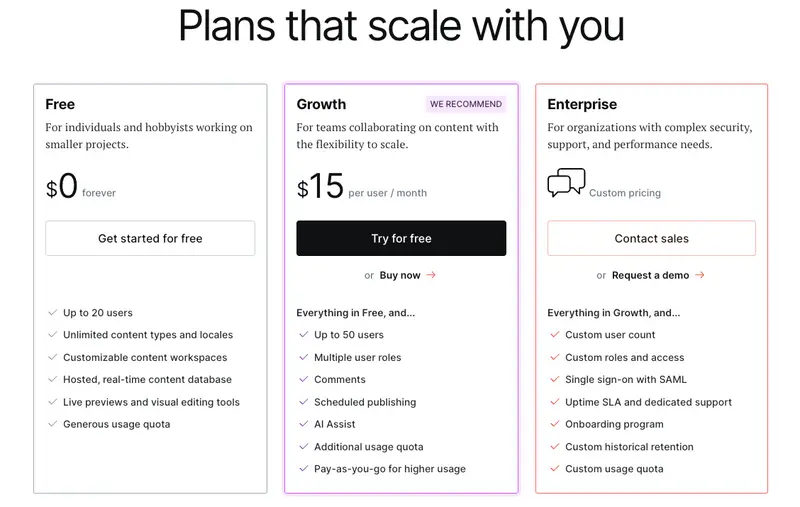
Sanity CMS offers a flexible pricing model that caters to different types of users, from individuals to large enterprises.
It starts with a Free plan, which is ideal for small projects and beginners, providing essential features such as a hosted content database and basic usage limits.
For growing teams, the Growth plan is available at $15 per user per month, offering more resources, real-time collaboration, and the ability to scale as needed.
For larger organizations with complex needs, Sanity offers Enterprise plans with custom pricing, which include advanced features like dedicated support, enhanced security, and tailored performance options.
WordPress
WordPress itself is open-source and free to use, meaning there is no cost for the core software. However, the overall cost of using WordPress can vary widely depending on your specific needs.
To run a WordPress site, you’ll need to pay for web hosting, which can range from $3 to $30 per month, depending on the provider and plan. Additionally, premium themes and plugins can add to the cost, with themes typically ranging from $50 to $200 and plugins from $20 to $200.
You may also need to budget for a domain name, which usually costs around $10 to $20 per year. While WordPress can be set up at a relatively low cost, the expenses can add up depending on the features and functionality you choose to implement.
Read: WordPress Pricing: How Much Does a WordPress Website Cost
When to Choose Sanity CMS
Sanity CMS is the right choice if you:
- Prioritize Performance and Security: You need a CMS that offers high performance and robust security out of the box. Sanity’s decoupled architecture optimizes performance and minimizes security risks by separating content management from content delivery.
- Plan for Future Growth: Your project is expected to scale over time, requiring a CMS that can grow with your needs. Sanity offers scalable pricing plans and the ability to handle large-scale content operations, making it a future-proof choice.
- Need Advanced Customization: You require a highly customizable content management system with the flexibility to build unique, content-driven applications. Sanity’s headless architecture allows for deep customization and integration with modern front-end technologies like React, Vue.js, or Angular.
- Work on Complex Projects: Your project involves managing large volumes of structured content, requiring a robust and scalable solution. Sanity’s structured content approach and real-time collaboration features make it ideal for complex, dynamic projects that demand precision and scalability.
- Require Real-time Collaboration: Your team needs to collaborate in real-time without conflicts, especially when multiple users are working on the same content. Sanity’s real-time collaboration tools streamline content creation and editing processes, enhancing team productivity.
Learn More: Overview of Outsourcing Services for WordPress
When to Choose WordPress
WordPress is the best choice if you:
- Need a User-Friendly Platform: You’re looking for an easy-to-use content management system that doesn’t require extensive technical knowledge. WordPress’s intuitive interface, one-click installation, and extensive documentation make it accessible for beginners and non-developers.
- Require Quick Setup: You want to get a website up and running quickly with minimal setup time. WordPress offers a vast array of themes and plugins that enable you to create and launch a fully functional WordPress website in a matter of hours.
- Want Extensive Plugin Support: You need access to a wide range of plugins to extend your website’s functionality. With over 59,000 plugins available, WordPress can accommodate almost any feature or function you need, from SEO optimization to e-commerce.
- Focus on Content Creation: You’re primarily focused on creating and managing content, such as blogs, portfolios, or small business WordPress websites. WordPress’s built-in tools, such as the Gutenberg block editor, make content creation straightforward and efficient.
- Value Community Support: You prefer a platform with a large, active community that provides extensive support, tutorials, and resources. WordPress’s global community offers unparalleled assistance, making it easier to troubleshoot issues and learn new skills.
Read: Where to Find Reliable WordPress Help Online
Looking for the Right CMS for Your Website?
WordPress remains the top choice for powerful, scalable, and SEO-friendly websites. Let our expert team at Seahawk help you unlock the full potential of WordPress for your business.
User Satisfaction: Sanity vs WordPress
When comparing user satisfaction between Sanity CMS and WordPress, it’s essential to consider both the overall experience and the specific needs of the users. Each platform has its strengths, and the satisfaction levels often reflect how well these strengths align with user expectations and project requirements.
Sanity CMS
Sanity CMS has been gaining recognition and positive feedback, particularly among developers and teams working on complex, content-driven projects. Users appreciate its flexibility, real-time collaboration features, and the ability to create highly customized content models.
According to recent surveys, such as the Jamstack Community Survey, Sanity scores highly in user satisfaction, especially among those who prioritize scalability, performance, and a modern development experience. Users who work with structured content and need a CMS that can scale with their business growth tend to rate Sanity very favorably.
WordPress
WordPress, being the most widely used CMS globally, enjoys a vast and diverse user base. Its popularity is largely due to its ease of use, extensive plugin ecosystem, and the vast amount of community support available. For many users, especially those who are less technically inclined or need to launch a website quickly, WordPress is the go-to choice.
While beginners and small business owners often report high satisfaction due to the platform’s accessibility and flexibility, advanced users sometimes express frustration with the need for frequent updates, potential security vulnerabilities, and performance issues when using numerous plugins.
Despite these challenges, WordPress continues to receive strong ratings for its ability to empower users to build and manage websites without needing to dive deep into code.
Read: Top WordPress Consultancy Service Providers
Conclusion
Choosing the right content management system is a pivotal decision that can influence the success of your online presence. Both Sanity CMS and WordPress offer unique strengths, catering to different types of users and project needs.
Sanity CMS stands out for its flexibility, scalability, and modern approach, making it an excellent choice for developers and teams working on complex, content-driven projects. On the other hand, WordPress remains a go-to platform for millions of users worldwide due to its ease of use, extensive plugin ecosystem, and strong community support.
In the end, the choice between Sanity CMS and WordPress should be guided by your specific project requirements, technical expertise, and long-term goals.
FAQs on Sanity vs WordPress
Is Sanity the best CMS?
Sanity is one of the best CMS choices for developers looking for a headless, API-driven content delivery system. It’s ideal for teams that need full control over structured data, a custom user interface, and seamless integration with external services. However, unlike WordPress, it requires more coding skills and a steeper learning curve.
What is Sanity CMS used for?
Sanity is a headless CMS used by web developers and teams to manage structured content across platforms. It’s great for static site generators, mobile-friendly websites, and projects that require flexible data integrity and custom user roles. You can seamlessly integrate it with any frontend and tools like Google Search Console for improved online visibility.
How much does Sanity CMS cost?
Sanity offers a generous free plan for individuals and small projects. Paid plans start with additional features, such as advanced security measures, higher limits, and professional support for larger development teams and businesses managing all their websites under one platform.
Is Sanity good for SEO?
Yes, Sanity is good for SEO, especially when used with SEO tools and schema markup. It supports meta titles, structured data, and can be optimized to boost search engine results. However, unlike traditional CMS platforms like WordPress with ready-to-use SEO plugins, Sanity may require manual configuration and more involvement from your development team to achieve top search rankings and cater to mobile users.
Is there a better CMS than WordPress?
WordPress is often considered the best CMS for most users due to its flexibility, large community, extensive library of SEO plugins, and ease of use. However, if you need a headless CMS or have advanced development expertise, options like Sanity or Joomla may offer different key features depending on your website development needs.
